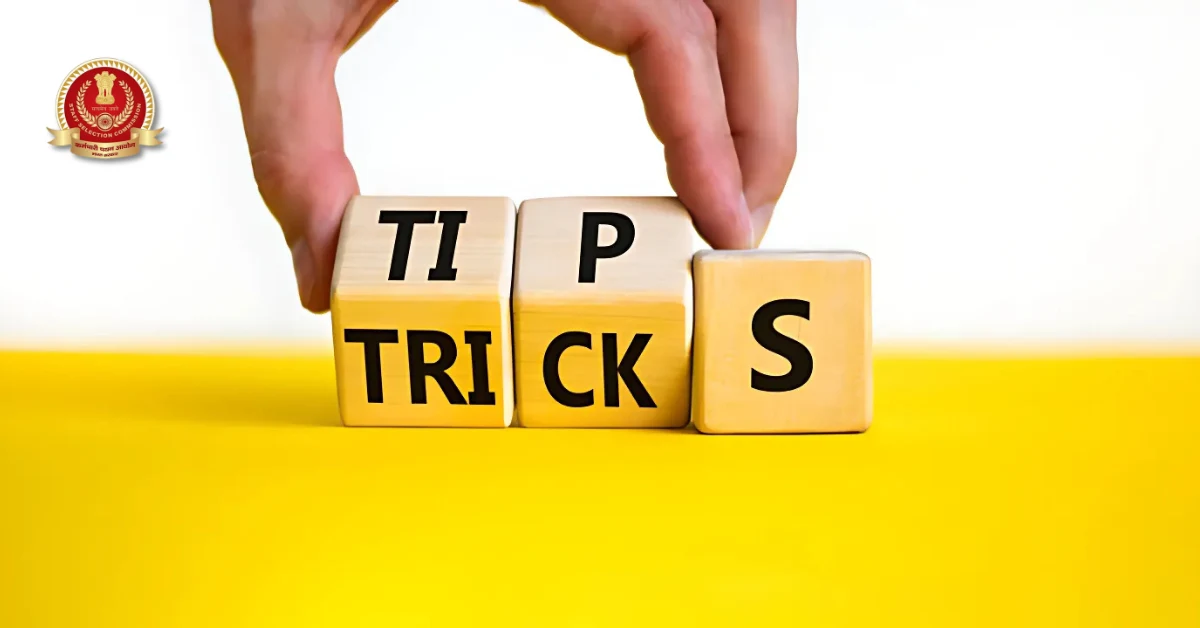How to prepare Statistics for SSC CGL Tier 2: SSC CGL is one of the most popular exams for recruitment into government jobs in India. SSC CGL Tier 2 includes three papers, with Paper 2 covering Statistics for JSO applicants. It consists of 100 questions worth 200 marks and requires good conceptual understanding, strong command over formulas, and regular practice. Since many topics are linked to Quantitative Aptitude, a solid base in Quant can be helpful. Focused revision and consistent practice are key to scoring well in this section.
SSC CGL Exam Overview
The SSC CGL exam is conducted annually to recruit eligible graduates for various Group B and Group C posts under the Central Government. It is one of the most competitive exams in India due to the wide range of job roles and career growth it offers.
| Particulars | Details |
| Name | Staff Selection Commission Combined Graduate Level (SSC CGL) |
| Conducted by | Staff Selection Commission |
| Exam Level | National |
| Frequency | Yearly |
| Vacancies | 14,582 (tentative) |
| Exam Mode | Online |
| Exam Duration | Tier-I: 60 minutes, Tier-II: 2 hours 15 minutes ( Paper – I) |
| Purpose of Exam | To select candidates for Group B and C posts in various departments of the Government of India |
| SSC CGL Tier 1 Exam Date | 13th August to 30th August, 2025 |
| Language | Multilingual |
| Exam Helpdesk No. | 011-69999845 |
| Official Website | ssc.gov.in |
SSC CGL 2025 Tier 2 Exam Pattern
The Tier 2 exam is the most important stage in the SSC CGL selection process. It includes multiple papers based on the post applied for. Paper 1 is compulsory for all candidates, while Paper 2 is only for Junior Statistical Officer (JSO) applicants.
- Mode: Computer-Based (Online)
- Type: Objective (Multiple Choice Questions), except for DEST
- Medium: English and Hindi (except English section)
- Paper 1 is conducted in two sessions (on the same day)
- Section III (Computer and DEST) is qualifying in nature
Negative Marking:
- 1 mark for each wrong answer in Paper 1 (Section I, II, III Module I)
- 0.50 mark for each wrong answer in Paper 2
Note:
- Module I of Section III (Computer Knowledge) and Module II (DEST) are qualifying in nature and not counted in merit.
- Paper 2 is only for candidates applying for the Junior Statistical Officer (JSO) post.
| Session | Section | Paper / Module | Subject | No. of Questions | Marks | Time |
| Session I | Section I | Module I | Mathematical Abilities | 30 | 90 | |
| Module II | Reasoning & General Intelligence | 30 | 90 | 1 Hour | ||
| Section II | Module I | English Language Comprehension | 45 | 135 | ||
| Module II | General Awareness | 25 | 75 | 1 Hour | ||
| Section III | Module I | Computer Knowledge Test | 20 | 60 | 15 Minutes | |
| Session II | Section III | Module II | DEST (Typing Test – 2000 key depressions) | 1 Task | Qualifying | 15 Minutes |
| — | — | Paper 2 (for JSO only) | Statistics | 100 | 200 | 2 Hours |
SSC CGL 2025 Tier 2 Syllabus
The Tier 2 exam is conducted in multiple sessions and includes three different papers depending on the post applied for. Below is the module-wise syllabus breakdown:
Paper 1: Compulsory for All Posts
This paper is mandatory for every candidate appearing in the SSC CGL Tier 2 examination, regardless of the post applied for. It assesses quantitative, reasoning, language, general awareness, and basic computer knowledge skills essential for most government roles.
1. Mathematical Abilities
This section evaluates candidates’ numerical aptitude and problem-solving skills.
Topics Covered:
- Number Systems: Whole numbers, decimals, fractions, relationships
- Arithmetic Operations: Percentages, Ratios, Averages, Profit & Loss, Interest, Time & Work, Time & Distance
- Algebra: Basic identities, surds, linear equations
- Geometry: Triangles, circles, tangents, similarity, congruence
- Mensuration: 2D and 3D figures (cones, cylinders, prisms, pyramids, spheres)
- Trigonometry: Ratios, identities, heights and distances
- Statistics & Probability: Graphs, central tendency (mean, median, mode), standard deviation, simple probabilities
2. Reasoning and General Intelligence
Includes both verbal and non-verbal reasoning.
Topics Covered:
- Analogy (semantic, symbolic, figural)
- Classification and Series (number, symbolic, figural)
- Logical Venn Diagrams, Coding-Decoding, Word Building
- Critical Thinking, Emotional Intelligence, Social Intelligence
- Embedded Figures, Pattern Folding, Mirror Images
- Problem Solving, Syllogism, Drawing Inferences
3. English Language and Comprehension
Tests grammar usage, reading comprehension, and vocabulary.
Topics Covered:
- Vocabulary: Synonyms, antonyms, idioms, one-word substitutions
- Grammar: Nouns, verbs, adjectives, tenses, prepositions, conjunctions
- Reading Comprehension: Narrative, current affairs-based, and opinion-based passages
- Sentence Correction, Active/Passive Voice, Direct/Indirect Speech
- Cloze Tests, Fill in the Blanks, Sentence Rearrangement
4. General Awareness
Assesses candidates’ understanding of current and static general knowledge.
Topics Covered:
- Environment and Society: Conservation, climate, ecological balance
- History & Culture: Ancient to modern Indian history, heritage
- Geography: Indian and world geography, natural resources
- Polity & Economy: Indian Constitution, public policies, economic planning
- Science: Basic principles of physics, chemistry, biology
- Scientific Research & Innovation
- Current Events: National and international importance
5. Computer Knowledge Module (Qualifying Only)
Focuses on basic digital skills and cyber awareness.
Topics Covered:
- Computer Fundamentals: CPU, memory, I/O devices
- Operating Systems and MS Office (Word, Excel, PowerPoint)
- Internet Basics: Browsers, search engines, email, e-banking
- Cybersecurity: Common threats, safe practices, data protection
6. DEST – Data Entry Speed Test (Qualifying Only)
Candidates are required to complete one data entry task of 2000 key depressions in 15 minutes.
Paper 2: Only for Junior Statistical Officer (JSO)
This paper tests statistical concepts and applications. It is mandatory only for candidates applying to the JSO post in the Ministry of Statistics and Programme Implementation.
Topics Covered:
- Data Collection & Presentation: Tabulation, graphs, frequency distributions
- Measures of Central Tendency & Dispersion: Mean, median, mode, standard deviation
- Moments, Skewness & Kurtosis
- Correlation & Regression: Scatter plots, correlation coefficients, regression equations
- Probability Theory: Conditional probability, Bayes’ Theorem
- Distributions: Binomial, Poisson, Normal
- Sampling Theory & Statistical Inference: Z, t, F, chi-square tests
- ANOVA (one-way and two-way)
- Time Series Analysis & Index Numbers
Key Guidelines for Tier 2 Examination
Check out the key guidelines below:
| Component | Details |
| Paper 1 | Compulsory for all posts |
| Paper 2 | Applicable only for JSO applicants |
| Negative Marking | Paper 1: 1 mark per wrong answer Paper 2: 0.5 mark per wrong answer |
| Qualifying Sections | Computer Knowledge Module & DEST in Paper 1 (not counted in merit) |
SSC CGL Tier 2 Preparation Strategy for Statistics (2025)
The Statistics paper in SSC CGL Tier 2 is only for candidates applying for the Junior Statistical Officer (JSO) or Statistical Investigator posts. The paper consists of 100 questions worth 200 marks, where each correct answer gives 2 marks, and 0.5 marks are deducted for each wrong answer. The key to scoring well lies in conceptual clarity, speed, and accuracy.
1. Build a Strong Foundation in Quantitative Aptitude
A solid base in Quantitative Aptitude helps in understanding Statistics better, especially in topics that involve calculations. Most statistical concepts are extensions of topics covered in Quant.
- Revise key Quant topics like Percentages, Ratios, Averages, and Algebra
- Practice calculation-based questions to improve speed
- Strengthen your basics before moving to complex statistical formulas
2. Focus on High-Weightage Topics First
Start your preparation with chapters that are more scoring and commonly asked in the exam. Covering these can help you secure at least 50–60% of the paper.
- Measures of Central Tendency (Mean, Median, Mode)
- Measures of Dispersion (Range, SD, Variance)
- Correlation and Regression
- Skewness and Kurtosis
- Probability and Sampling Theory
3. Memorize and Regularly Revise Formulas
Statistics involves many formulas, and retaining them is essential for quick and accurate answers. Revision is the only way to ensure recall during the exam.
- Maintain a separate formula notebook
- Revise important formulas every few days
- Write down shortcut techniques and tips alongside formulas
4. Practice from NCERT (Class 10 to 12)
NCERT books are great for clearing basic concepts. The questions are straightforward and provide the perfect starting point for beginners.
- Start with examples and solved questions
- Move to exercise-based problems once basics are clear
- Use NCERT for chapters like Statistics, Probability, and Graphs
5. Strengthen Data Interpretation & Tabulation Skills
Data interpretation is an important part of the paper. You should be comfortable with reading and understanding data quickly.
- Histograms, Bar Charts, and Pie Charts
- Frequency tables and grouped data
- Tabulation-based question formats
6. Solve Previous Year Papers & Attempt Mock Tests
Practicing real exam questions helps you understand the question pattern and improve your timing. Regular practice builds both speed and accuracy.
- Attempt full-length mocks weekly
- Time yourself strictly during practice
- Analyze your mistakes after each test
7. Set a Target of 65–70 Attempted Questions
To stay above the cutoff, aim to attempt at least 65–70 questions with good accuracy. Avoid blind guessing and focus on high-confidence areas.
- First attempt questions from your strong topics
- Don’t spend too much time on complex calculations
- Leave time for review and double-checking answers
Check out Courses for All Govt Exams
FAQs
Ans. No, Statistics (Paper 2) is only for candidates applying for the Junior Statistical Officer (JSO) post.
Ans. The paper includes 100 questions, carrying 2 marks each, for a total of 200 marks.
Ans. Maintain a separate formula book, revise weekly, and practice formula-based MCQs regularly.
Ans. Absolutely. Regular mock tests and PYQs improve your speed, accuracy, and familiarity with exam patterns.
Ans. No, candidates must have studied Statistics as a subject in graduation to be eligible for the JSO post.
- Delhi Police HCM Exam Date 2025 Out, CBT scheduled from 7th to 12th January 2026
- Sarkari Result 2025, Latest सरकारी नौकरी Updates & Results
- Indian Overseas Bank LBO LPT Dates 2025 Out, Check Notice
- PNB LBO Syllabus and Exam Pattern 2025, Check Details
- PNB LBO Salary 2025, In Hand Salary, Perks, and Allowances
- Most Repeated Quantitative Aptitude Questions for SSC CHSL Tier 2

Hello, I’m a content writer working at Oliveboard. I focus on creating blogs, articles, and educational content that’s simple, clear, and saves time for readers. I believe in writing that adds real value without overcomplicating things. I also have strong knowledge of banking and government exams, which helps me create content that is both accurate and easy to understand. With experience and consistency, I aim to make preparation smoother for every learner.
